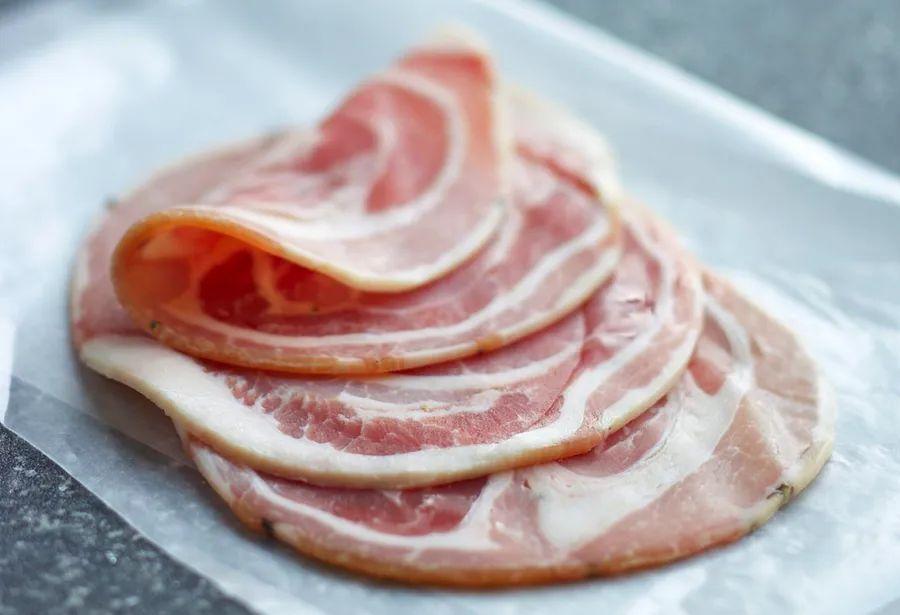What is Pancetta, exactly?

If you're into cured meats or dishes like spaghetti alla carbonara, you're probably familiar with pancetta. But if not, you're in the right spot to discover its secrets. Often compared to bacon, pancetta offers more complexity than meets the eye. Keep reading to explore its flavor, how to cook with it, and what to use when you're in a pinch without pancetta.
What is Pancetta?
Pancetta (pronounced pan-CHET-tah) is a cut of pork belly that's salt-cured but not smoked. A traditional Italian delicacy, it can be enjoyed both raw or cooked, and is available in thin slices or small cubes. The sliced version is perfect for sandwiches or antipasti, while the cubed form is ideal for cooking.
What Does Pancetta Taste Like?
Pancetta offers a bold pork flavor with a notable saltiness. It resembles bacon in taste, but without the smokey essence.
How Does Pancetta Compare to Bacon and Prosciutto?
Pancetta, bacon, and prosciutto are all cured pork products, making it easy to confuse them. Here's a breakdown of how they differ from one another:
- Pancetta is made from pork belly, the underside of a pig. It's cured, but not smoked, and seasoned with salts, spices, and other ingredients such as juniper berries. Pancetta can be eaten both cooked and uncooked, and it has a fatty, silky texture and light pink color. Pancetta takes about 3 weeks to cure.
- Bacon is also made from pork belly, but it's both cured and smoked, giving it an earthy flavor. It has a dark pink color and is typically cut into strips, and it cannot be eaten raw. Bacon takes about 10 days to cure.
- Prosciutto is made from the hind legs of a pig and is dry-cured. It has a thick, buttery, and smooth texture, and is typically cut into very thin slices. Prosciutto is usually served raw and is a common component of charcuterie and antipasto boards. Prosciutto takes about a year to cure.
Where to Purchase Pancetta
You can find pancetta in the deli section of most supermarkets, either pre-sliced or cubed. For a custom cut, visit a local butcher or a specialty grocery store that offers fresh slices to order.
Discover the Recipe: Homemade Pancetta
Ways to Use Pancetta
Pancetta is rich in fat, and when cooked, it adds an intense burst of flavor to dishes like pasta, soups, and vegetables. A small amount can go a long way, which is why cubed pancetta is ideal for flavoring carbonara or hearty stews with beans and greens.
Pancetta can be enjoyed uncooked as well. It's a fantastic choice for sandwiches and works wonderfully as part of a charcuterie or snack platter.
Alternatives to Pancetta
The best substitute for pancetta is prosciutto, as it shares the same salty, unsmoked flavor and can be enjoyed uncooked. If you're cooking, bacon is a good option with a similar texture and fat content, though you'll need to adjust for its smoky taste. If you don’t have cured pork, try using ham or mushrooms, but remember to add some extra salt.
Pancetta Recipes
Explore some of our favorite pancetta-based recipes below:
- Spinach, Egg, and Pancetta with Linguine
- Greens with Cannellini Beans and Pancetta
- Chef John's Spaghetti alla Carbonara
- Peas and Pancetta

1

2

3

4

5
Evaluation :
5/5